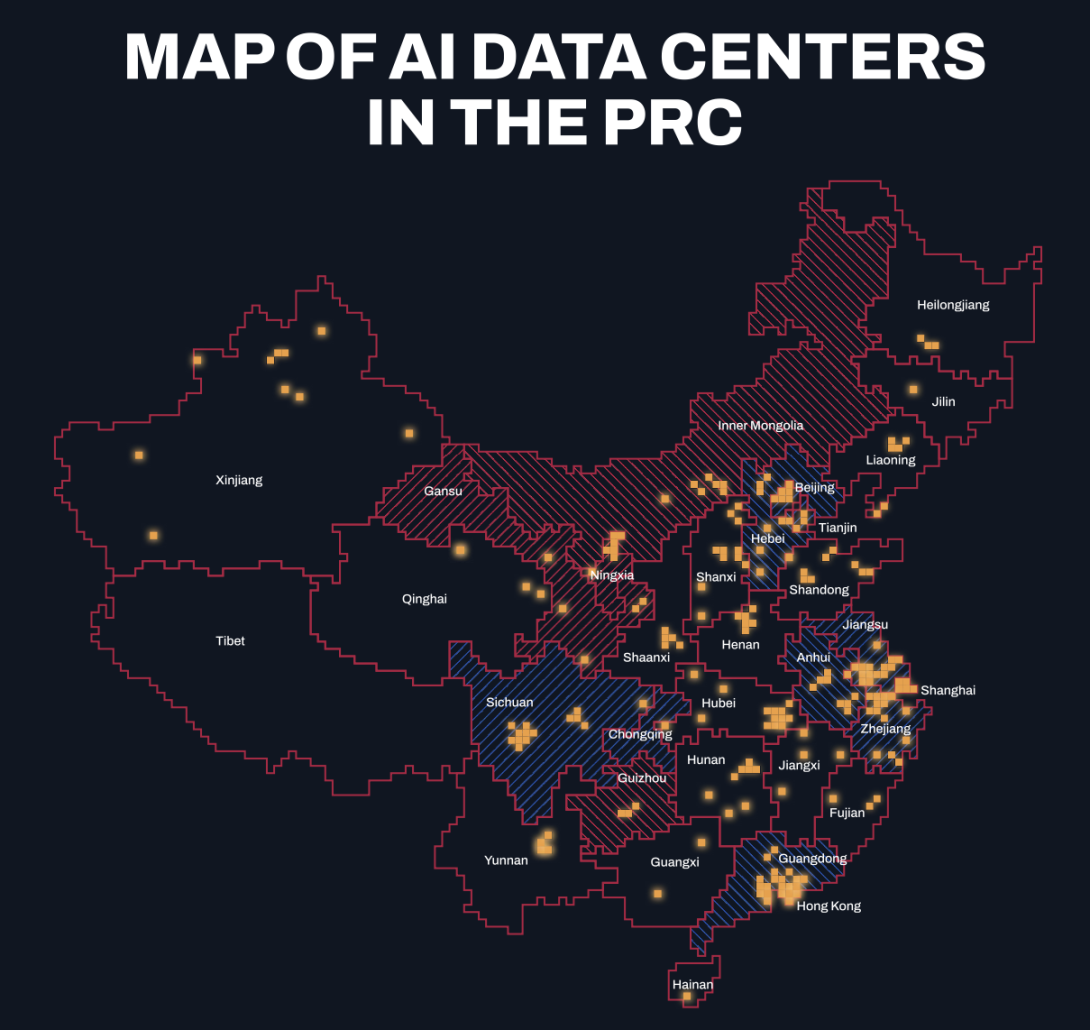China’s AI Infrastructure Surge: U.S. Must Catch Up, Experts Say
A new report developed by Strider Technologies and the Special Competitive Studies Project (SCSP) warns that China is executing a state-directed campaign to dominate global artificial intelligence (AI) and suggests that to safeguard technological leadership, the United States must match the urgency of China’s AI strategy with a coherent, whole-of-nation response.
The report, titled “China’s AI Infrastructure Surge: How PRC Data Centers and AI Models Bridge Military Ambitions and Global Connections,” outlines China’s AI policy and recommendations for U.S. policymakers.
During a virtual Defense Writers Group meeting on May 29, Greg Levesque, CEO and co-founder of Strider Technologies, explained that China is investing heavily in its infrastructure base, and that they’re ahead of stated policy goals when it comes to AI.
“It’s very clear they view this as an existential race, and they are hell-bent on being number one,” said Levesque.
“Like in every other emerging technology, and specifically AI, China has not been standing still,” said Ylli Bajraktari, president and CEO of the SCSP. “They've had a clear vision about what they want to do, they've had clear investments, and obviously, in today's world, we wanted to look at how are they doing in building this digital infrastructure when it really comes down to data centers and the compute power.”
The report states that as of mid-2024, China has built or announced plans to build more than 250 AI data centers across all regions of the country. The report also found a massive uptick in Chinese government recruitment of AI scientists in the United States.
“That's a core part of their broader AI strategy. And I would argue that the U.S. government has no real clear mission or strategy around mitigating that,” said Levesque.
The report states that the implications of the People's Republic of China’s (PRC's) AI infrastructure buildout for the United States and its allies are profound. The strategy detailed in the report aims to be a state-driven, globally networked campaign to gain an enduring asymmetric advantage against China.
On China’s AI strategy, Bajraktari explained that this is a zero-sum game.
“Whoever ends up being the first will set the rules of the road for the rest of the world,” he said. “I think in the Chinese mindset, this is a zero-sum game as well, because I don’t think they will accept any kind of scenario in which they'll end up being the second when it comes to technology competition.”

My fundamental view is [that] industry has to be a part of the national security solution and strategy. There's no other way around it.
The report outlines the following recommendations for policymakers:
- Restrict Security-Relevant AI Infrastructure Developers
- Leverage PRC Dependence on Foreign Software to Apply Strategic Pressure
- Strengthen International Collaboration to Monitor and Counter PRC AI Infrastructure Expansion
The report also includes a call to action for industry leaders.
“My fundamental view is [that] industry has to be a part of the national security solution and strategy. There's no other way around it,” said Levesque.
The report outlines the following recommendations for industry leaders and investors:
- Understand the Competitive Landscape
- Monitor PRC Activity
- Eliminate Vectors of Technology Transfer
- Enhance Awareness
Read the detailed report here.





Comments